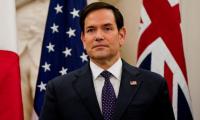public record of violent deaths following the 2003 invasion of Iraq.”
In Afghanistan, there has been less tallying, but the UN Mission there has kept a count of civilian casualties from the ongoing war and estimates the cumulative figure, since 2001, at 21,000 (though again, that is undoubtedly a conservative figure). However, when it comes to the American drone campaigns in Pakistan and Yemen, in particular, where the Obama administration has adamantly resisted the idea of significant civilian casualties, the civilian counters have been there under the most impressively difficult circumstances, sometimes with representatives on the ground in distant parts of Pakistan and elsewhere.
In a world in which drone operators refer to the victims of their strikes as ‘bug splat’ and top administration officials prefer to obliterate those “bugs” a second time by denying that their deaths even occurred, the attempt to give them back their names, ages, and sexes, to remind the world of what was most human about the dead of our new wars, should be considered a heroic task.
The London-based Bureau of Investigative Journalism, in particular, has done careful as well as dogged work tabulating drone casualties in Pakistan and Yemen, including counts and estimates of all those killed by drones, of civilians killed by drones, and of children killed by drones. It even has a project, ‘Naming the Dead’, that attempts to reattach names and other basic personal information to the previously nameless dead (721 of them so far).
In 2012 the Columbia Law School Human Rights Clinic studied the three sources of such counts and issued a report of its own.
Among the more fascinating reports, the human-rights group Reprieve recently considered claims to drone ‘precision’ and surgical accuracy by doing its own analysis of the available data. It concluded that, in trying to target and assassinate 41 enemy figures in Pakistan and Yemen over the years, Washington’s drones had managed to kill 1,147 people without even killing all the figures actually targeted.
In other words, when it came to counting, civil society rode to the rescue, though the impact of the figures produced has remained limited indeed in this country. In some ways, the only body count of any sort that has made an impression here in recent years has been sniper Chris Kyle’s 160 confirmed Iraqi ‘kills’ that played such a part in the publicity for the blockbuster movie American Sniper.
Exceptional killers: In his public apology for deaths that were clearly embarrassing to him, President Obama managed to fall back on a trope that has become ever more politically commonplace in these years. Even in the context of a situation in which two innocent hostages had been killed, he congratulated himself and all Americans for the exceptional nature of this country.
Whatever our missteps, in other words, we Americans are exceptional killers in a world of ordinary ones. This attitude has infused Obama’s global assassination program and the White House ‘kill list’ that goes with it and that the president has personally overseen. Pride in his killing agenda was evident in the decision to leak news of that list to the New York Times back in May 2012. And this version of American exceptionalism fits well with the exceptionalism of the drone itself – even if it is a weapon guaranteed to become less exceptional as it spreads to more countries (in part through recently green-lighted US drone sales to allies).
On the rarest of occasions, Obama admitted in that White House briefing room, drone strikes even kill exceptional people (like us) who need to be attended to presidentially, whose deaths deserve apologies, whose lives are to be highlighted in special media accounts, and whose value is such that recompense is due to their families. In most of the places the drone goes, however, those it kills by mistake are, by definition, unexceptional. They deserve neither notice nor apology nor recompense. They count for nothing.
One thing makes the drone a unique weapon in the world of the uncounted dead on a planet where killing otherwise seems like a dime-a-dozen activity: its pilot, its ‘crew’, those who trigger the launch of its missiles are hundreds, even thousands of miles away from danger. Though we speak loosely about drone ‘warfare’, the way that machine functions bears little relation to war as it was once defined. Conceptually, the drone represents a one-way street of destruction. Because in its version of “warfare” only one side can be hurt, its “signature” is slaughter, not war, no matter how carefully it may be used. It is an executioner’s weapon.
In part because of that, it’s also a blowback weapon. Though it may surprise Americans, the hunted don’t take to the constant buzz of drones in their skies in a kindly fashion. They reportedly exhibit the symptoms of PTSD; they are resentful; they grasp the unfairness and injustice that lies behind the machine and its form of “warfare” and are unimpressed with the exceptionalism of the Americans using it. As a result, drones across the Greater Middle East have been the equivalent of recruitment posters for those who want revenge and so for extremist outfits everywhere.
Drones should be weapons of shame and yet, despite the recent round of criticism here in the wake of the hostage killings, their use is still widely supported in Washington and among the public. The justification for their use, whatever ‘legal’ white papers the Obama administration has produced as cover, is simple enough: power. We send them across sovereign boundaries as we wish in search of those we want to kill because we can, because we are us.
So all praise to the few in our world who think it worth the bother to count those who count for nothing to us. They do matter.
Excerpted from: ‘Counting the Dead in the Age of Drone Terrorism’.
Courtesy: Commondreams.org
According to Trump, US is earning $2 billion per day in newly-introduced trade tariffs
Negligible contribution of e-commerce underscores persistent reluctance towards digital adoption
Autocratic regimes are hardest yet may not be geared towards public wealth and inclusivity
I presented these proposals which he must have also been briefed about by his ministries
Five people were killed, including one of the guards after being hit over the head with a fire extinguisher
Pakistan has a long way to go in providing equitable digital access to its population of nearly 250 million







